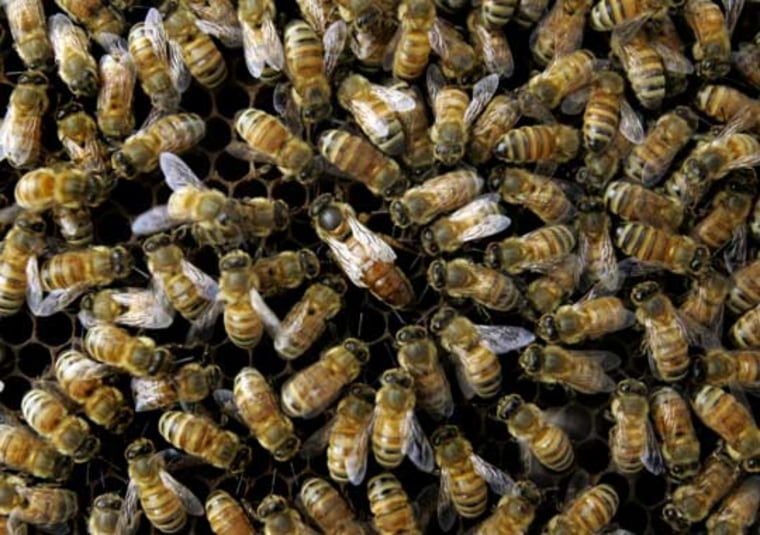Selenium, a potent toxin, is showing up in alarming concentrations in the pollen and nectar of two plants common in California's Central Valley, according to a new study.
If the element is finding its way into bee populations, it could affect the region's multi-billion dollar agricultural industry, as well as the nation's food supply.
The rocks, soil and groundwater of California's San Joaquin Valley contain some of the highest natural levels of selenium found anywhere — in some places up to 14 parts per million.
Some plant species take advantage of these conditions, including Indian mustard (Brassica juncea) and Desert Prince's Plume (Stanleya pinnata), which build selenium into their tissues as a defense mechanism against predators.
However, the plants rely on bee pollination for reproduction, which is why Kristen Hladun and John Trumble of the University of California, Riverside were surprised to find that nectar and pollen collected from plants grown in a laboratory contained between 108 and nearly 2,000 parts per million of selenium -- many times the lethal level for most insects.
"In insect systems we've studied, it's toxic at around 15 to 20 parts per million, so this is way too high," Trumble said. "Pollen and nectar with that much selenium will likely kill all pollinators that feed on it."
In small amounts, selenium is an important nutrient and anti-oxidant. It's even known to have anti-cancer properties in humans.
Very little research exists documenting how selenium affects bees. If bees mix only a fraction of high-selenium pollen and nectar into their diets, it may act like a medicine, protecting them against diseases. Some species could even have adapted a resistance to selenium.
Hladun and Trumble are planning to investigate the health of bee hives in the Central Valley region and test the insects' resilience to selenium. The dramatic concentration they've seen in plants in their laboratory experiments are troubling, but whether that translates into the field remains to be seen.
"I'd have to say that the verdict is still extremely out on this," John Freeman of California State University, Fresno said. "To make the jump from the lab to the field and say selenium is affecting the health of bees is a big, big stretch."
Bee pollination accounts one third of all food humans consume, so any potential impact on bees could have far-reaching implications for America's food supply. But Freeman cautions that there is no hard evidence that bees are affected — positively or negatively — by selenium-rich pollen or nectar.
In a recent, unpublished study conducted by the United States Department of Agriculture, bee hives placed in fields of selenium-rich Indian Mustard showed no accumulation of the element in their honey.
"It's a disappointment that there was no selenium," Freeman said. "We were hopeful there would be some. We would love to be able to market its anti-carcinogenic properties."
